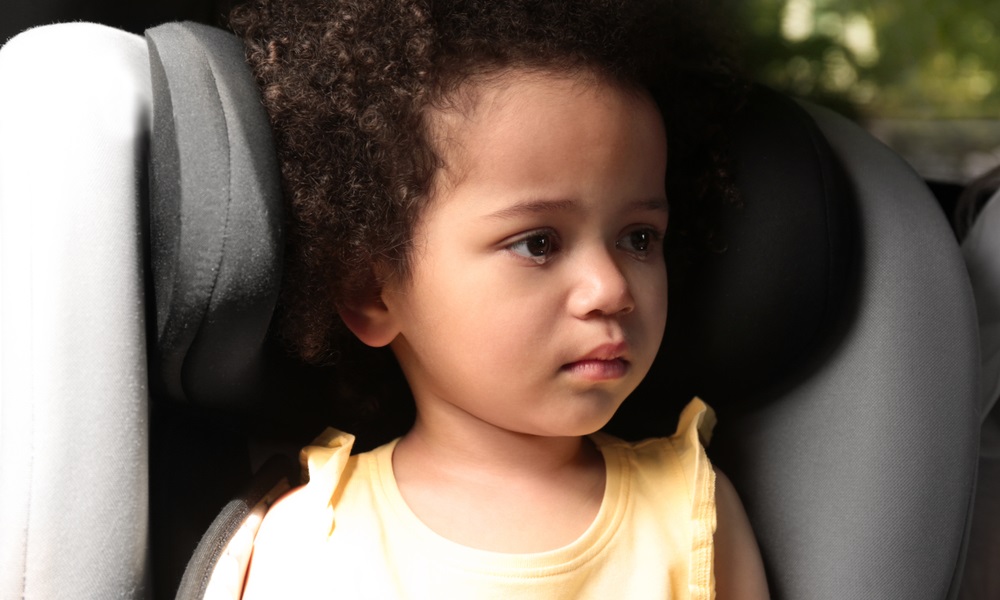 NEW AFRICA/SHUTTERSTOCK
NEW AFRICA/SHUTTERSTOCK
America’s most recent attempt to reckon with racism, a reckoning that began with the death of Michael Brown in Ferguson, Missouri in 2014 and shifted into high gear with the death of George Floyd in Minneapolis in 2020, has forced the nation to come to grips with two of the three major racist laws passed by Congress in the 1990s.
Ugly, racist stereotypes about Black youth would lead to passage of draconian anti-crime legislation in 1994. The First Step Act took a first step back from that approach.
Ugly racist stereotypes about “welfare queens” would lead to draconian cuts in welfare benefits in 1996. The expanded child tax credits in the COVID relief bill represent a welcome change in course.
But when it comes to fighting racism, child welfare always lags behind. After all, what other field has an entire “caucus of denial” running around claiming that it is immune from the racism that infects every other aspect of American life?

Richard Wexler
So in 2016, when Hillary Clinton ran for president, she ran away from the crime bill and the welfare bill — but kept right on bragging about the third racist law — the so-called Adoption and Safe Families Act. She did so even though ASFA also was built on ugly racist stereotypes, including the notorious “crack baby” mythology of the 1980s. And she did so even though, like the other laws, ASFA has devastated impoverished families, particularly families of color.
As professor Martin Guggenheim, co-director of the Family Defense Clinic at New York University School of Law (and president of my organization, the National Coalition for Child Protection Reform) explains:
“ASFA has been responsible for the massive destruction of black and brown families. More than 2 million children’s parents’ rights have been terminated … since ASFA was enacted. … It is an unpleasant truth that many of the organizations whose collective voice is condemning racist police practices now have for decades celebrated the approach enshrined in law by ASFA, some by explicitly celebrating adoption and others using the euphemism ‘permanency.’”
And they’re still at it. Even as some in child welfare issue calls to repeal ASFA or, failing that, at least curb its worst elements, much of the child welfare establishment sits on its hands, apparently hoping that if they just put “Black Lives Matter” statements on their websites, the moment will pass.
And the worst part of ASFA is getting the least attention.
WORSE THAN THE TIMELINES
Most of the criticism of ASFA is focused on the horrors it inflicts on families, at the end of the child welfare process. The law includes timelines that, with some exceptions, demand that states arbitrarily rush to terminate children’s rights to their parents (a more accurate term than “termination of parental rights”).
But the worst part of ASFA isn’t any one part of the law, it’s the mentality that underlies it. From the very beginning of child welfare system involvement with a family, one part of ASFA enshrines a take-the-child-and-run approach to child welfare. That part of the law states that in all decisions child safety should be paramount. Not only is that correct, it already was the case before ASFA. But in ASFA this proposition is presented, over and over, in a context that falsely equates child safety with child removal.
That, in fact, was ASFA’s primary purpose, according to the late Professor Richard Gelles, who claimed responsibility for writing the bill. A few years after its passage, Gelles couldn’t resist a little gloating. As he explained to the New York City publication Child Welfare Watch:
“Initially, this was just supposed to be a safe families bill, not really an adoption bill at all. The adoption component was a way of sanitizing the bill, to make it more appealing to a broader group of people. Adoption is a very popular concept in the country right now.” [Emphasis added.]
DON’T SAY THE ‘O WORD’!
Sanitizing ASFA with claims about adoption was important for another reason: It was a way to reassure liberals that all those children the law would push states to take away wouldn’t wind up in then-House Speaker Newt Gingrich’s preferred option: orphanages, an option Gelles and other ASFA proponents also supported. Indeed, all the talk about adoption began after pollster Frank Luntz sent House Republicans a memo telling them they could get what they wanted — if they stopped using the O word.
So ASFA proponents exploited every high-profile death of a child “known to the system” to falsely claim that a Vast Family Preservation Conspiracy was bending over backwards to give vicious parents “too many chances” to raise their children. The VFPC was accused of promoting “family preservation at all costs.”
That was, and still is, the Big Lie of American child welfare. Even in the 1990s, we knew that real family preservation programs are not only more humane than foster care, they’re safer than foster care. The evidence of the danger of foster care and the safety of family preservation has only increased since then.
What really accounts for the horror stories? Almost always, it’s because caseworkers are so overwhelmed with false allegations, trivial cases and cases of poverty confused with neglect that they don’t have time to investigate any case properly. Almost always it isn’t family preservation that led to tragedies, it’s the lack of family preservation.
Indeed, all through the 1980s and 1990s, even as the myth of the Vast Family Preservation Conspiracy was taking hold, the number of children torn from their families actually was increasing.
The prior law, the Adoption Assistance and Child Welfare Act of 1980, requires that states make “reasonable efforts” to keep families together — nothing more. But that law was routinely ignored. It still is. Reasonable efforts is considered such a joke that judges openly admit that they lie and claim such efforts have been made even when they know otherwise — because checking the “reasonable efforts” box on a form is required for a state to receive federal foster care assistance.
But just like backers of the crime bill and the welfare bill, supporters of ASFA exploited stereotypes about poor people, especially nonwhite poor people. That’s why in its very first, unsanitized form, the entirety of what would become ASFA was a clause to the effect that, in all child welfare decisions “the child’s health and safety shall be the paramount concern.” Some version of that phrase appears repeatedly throughout the much longer, fully sanitized final version of ASFA.
But what could possibly be wrong with that? How could anyone object — except for some nefarious member of the Vast Family Preservation Conspiracy whose very objection would be taken as proof that they don’t really care if children are safe?
Pretty clever, right?
The problem is that before ASFA passed child safety already was the paramount concern. By suggesting this wasn’t so in the context of horror stories about children left in their own homes and claims that reasonable efforts were antithetical to child safety, this clause was just another way of saying: Take the child and run.
The data show that child welfare got the message. According to the federal government’s annual Child Maltreatment reports, the rate of known child abuse peaked in the United States in 1993. But entries into foster care kept increasing.
So if you’re already confusing child removal with child safety and a new federal law encourages you to do more of the same, what happens? The number of children torn from everyone they know and love keeps right on going up. The increases in children taken over the course of a year didn’t stop until 2006. There were a few years of slow declines, then an increase and now the number is declining again.
So ASFA’s true effect was to make the system bigger, tear apart even more families needlessly and consign more children to the chaos of foster care. (At the other end of the system, the timelines helped create a generation of “legal orphans,” children who “aged out” with no ties to their own families — or any other.)
At the same time, the ASFA mentality further overloaded the system, increasing the chances that children would be abused, sometimes fatally, in foster care itself and increasing the chances that children in real danger in their own homes would be overlooked. Instead of making safety “paramount” ASFA makes all vulnerable children less safe.
PARAMOUNT+
So how do we truly make child safety paramount? By disentangling child safety from child removal and recognizing that not only are they not the same, they often are antithetical.
So if ASFA is not repealed outright, then there needs to be an addition to the language about what it means to make child safety paramount. Call it the “paramount+” clause.
Wherever that phrase about “paramount concern” appears, it should be followed by these words: “consistent with the understanding that in the overwhelming majority of cases the safest option will be to allow children to remain in their own homes, with all necessary support provided to their families.”
Now, let’s see who really thinks child safety is paramount.
Richard Wexler is executive director of the National Coalition for Child Protection Reform.































